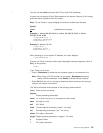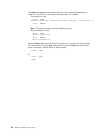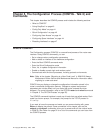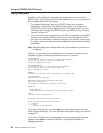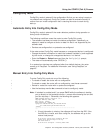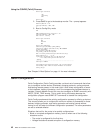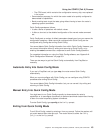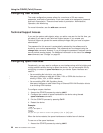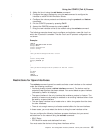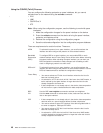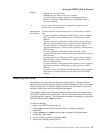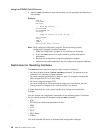– The CPU board, which contains the configuration memory chip, was replaced
in the router.
v Demonstration purposes, for which the router needs to be quickly configured to
demonstrate its capabilities.
v Bench-marking tests to get the tests going without having to learn the router’s
operating system commands.
Quick Config operates as follows:
v It asks a series of questions with default values.
v It offers a short-cut to the detailed configuration of the normal mode command
set.
Quick Config sets a number of default parameters based upon how you answer the
configuration questions. What cannot be configured with Quick Config can be
configured using Config after exiting Quick Config.
You cannot delete Quick Config information from within Quick Config. However, you
can correct information either by exiting and returning to Quick Config, or by
entering the restart command as a response to some Quick Config questions.
For complete information on using the Quick Config software, see “Appendix A.
Quick Configuration Reference” on page 651.
There are two ways to get into Quick Config: automatically from EasyStart or
manually.
Automatic Entry Into Quick Config Mode
If you are in EasyStart and you type stop, the router enters Quick Config
automatically.
What you cannot configure with Quick Config you can configure using CONFIG
processes after exiting Quick Config.
You cannot delete Quick Config information; but you can correct it by exiting and
returning to Quick Config.
Manual Entry Into Quick Config Mode
You might want to run Quick Config manually to demonstrate the router’s
capabilities or to reconfigure dynamically to perform benchmark tests without having
to learn the router’s operating system commands.
To enter Quick Config, type qconfig at the Config> prompt.
Exiting from Quick Config Mode
To exit Quick Config, restart by entering r from any prompt. Follow the queries until
you enter no and then enter q to quit. The router returns to either the Config
(only)> or the Config> prompt.
Using the CONFIG (Talk 6) Process
Chapter 5. The Configuration Process (CONFIG - Talk 6) and Commands 43



